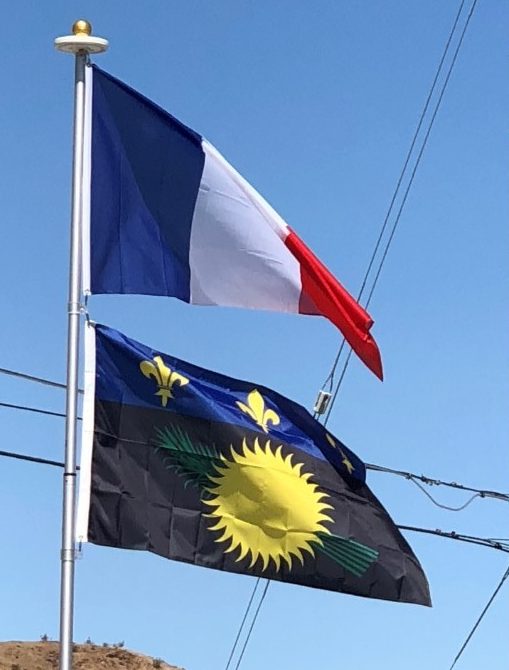Guadeloupe is a component of Overseas France

located in the eastern Caribbean Sea, a part of the
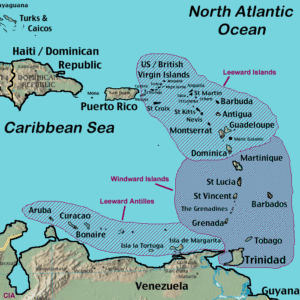
which themselves are part of the Lesser Antilles,
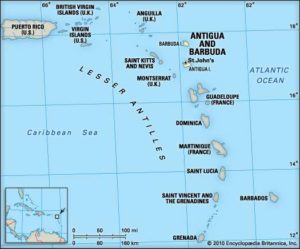
a much larger grouping. For the purposes of administration, Guadeloupe is a single overseas department. Guadeloupe features a land area of 1,628 square kilometres (629 square miles) and an estimated population of 400,132 as of January 2015. Guadeloupe is therefore the largest and most populous European Union territory in North America.
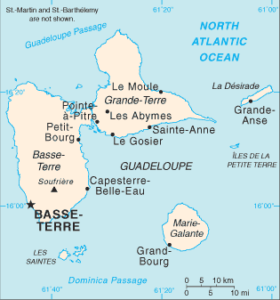
Guadeloupe’s two main islands are Basse-Terre to the west and Grande-Terre to the east, which are separated by a narrow strait that is crossed with bridges. They are often referred to as a single island. The department also includes the Dependencies of Guadeloupe, which include the smaller islands of Marie-Galante and La Désirade, and the Îles des Saintes.
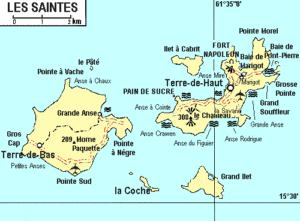
Originally Guadeloupe was inhabited by the relatively peaceful Arawak peoples from about 300 CE and by the 8th century the more hostile and warlike Caribs had taken over. They remained isolated an in undisputed control until their discovery by Columbus,

on his second voyage, in November 1493. He gave the island the name that it carries to this day. It is also said that Columbus first saw a pineapple
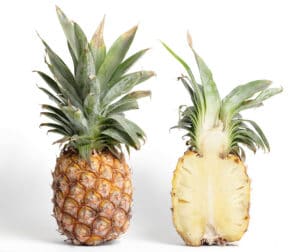
on Guadeloupe even though they had been grown in South America for centuries, but of course, Columbus never found the South American mainland.
In 1635 French settlers had eradicated the Carib peoples and started to set up a plantation economy. By 1674 the island was formally annexed to the Kingdom of France.
The British occupied the island several times over the intervening centuries, often as a result of treaties and wars in faraway Europe. At one point, for a brief time, Guadeloupe was even ceded to Sweden, not known to be major player in colonial affairs in North America. The attraction was sugar.
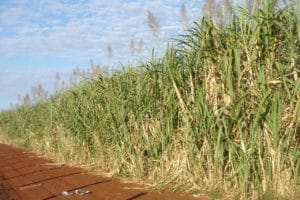
Guadeloupe produced more sugar than all of the British islands combined, worth about £ 6 million per year.
The abolition of slavery on Guadeloupe in 28 May 1848 would adversely affect the amount of sugar produced but it wouldn’t eliminate it.
There is an active volcano in Guadeloupe called “La Soufrière.”
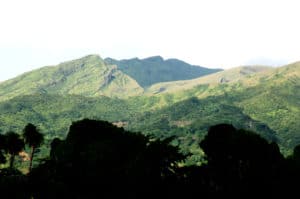
It is one of the nine active volcanoes of the Lesser Antilles. Its last eruption was in 1976.
Guadeloupe is also located in the hurricane belt and has suffered severe damage from at least 9 hurricanes in the 20th century, most recently in 2017 from Hurricanes Irma and Maria.
The most important industry on Guadeloupe today is tourism. The vast majority of visitors from Metropolitan France, over 83% of all tourists, with relatively small numbers coming from the United States, only about 3%. Visitors from the rest of Europe outside of France outnumber American visitors by about 3 to 1. This is in part due to the lack of bilingual French speakers in the United States but travel is also hampered by poor connections to the United States despite proximity. While there are direct connections from Miami on Air France, most Americans must transit through Puerto Rico utilizing small commuter planes.
